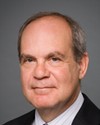No, I don't think so. We don't get a lot of information from the farms. We don't know where they file their information. We would like a registry. We asked for a registry from the provincial government.
What I will tell you, Mr. Kamp, is the fish doesn't look the same. The fish is not as dense. The oil content doesn't seem to be as high. It's a very tasty fish, but it doesn't taste like wild sablefish.
One of the major concerns we have as we try to be an example and move from a volume fishery of 4,900 tonnes down to a sustainable 2,400 is that we are doing it by going out and promoting our good practices. We're going out and promoting it by way of flavour, taste, and desirability by chefs. If you've got a product that comes in and has the same name but effectively is not the same fish, it's going to have a significant market impact. We are the success story for fisheries on both coasts with respect to sustainability and leading on value-added increase in pricing.
I want to underline again that 90% our market is offshore, so we are an export industry. We're bringing in dollars that otherwise would not be brought in.
I am not anti-aquaculture, and if you do go back, Mr. Chairman, you will find that I've actually written a report while I was sitting in your chair that supported aquaculture development. We just want everybody to take a deep breath, look at the evidence, and take the precautionary approach. I don't understand why the department—and it's not just under your government; it was the same under previous governments—just doesn't look and say this doesn't smell right. If we can't prove it doesn't have an impact, let's slow it down and gather the information before we make decisions.
I think it's one of the reasons that the Prime Minister has announced this inquiry: it's because we need to get the information sorted out, we need good scientists such as Dr. Dill and others to put their theses forward, and we need to make some decision to save these wild stocks.
I don't want my stock to go the way of the Fraser River sockeye.



